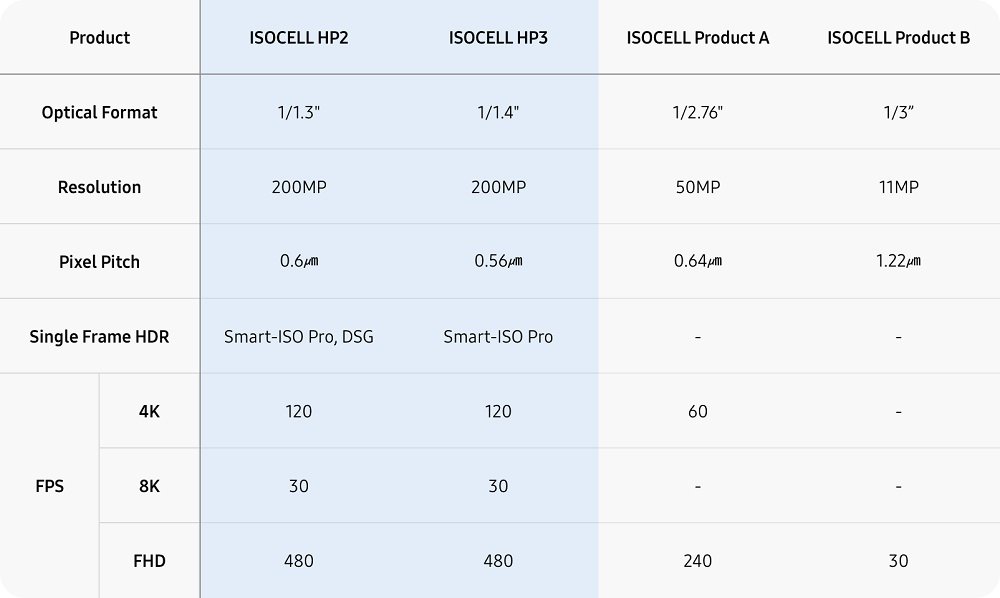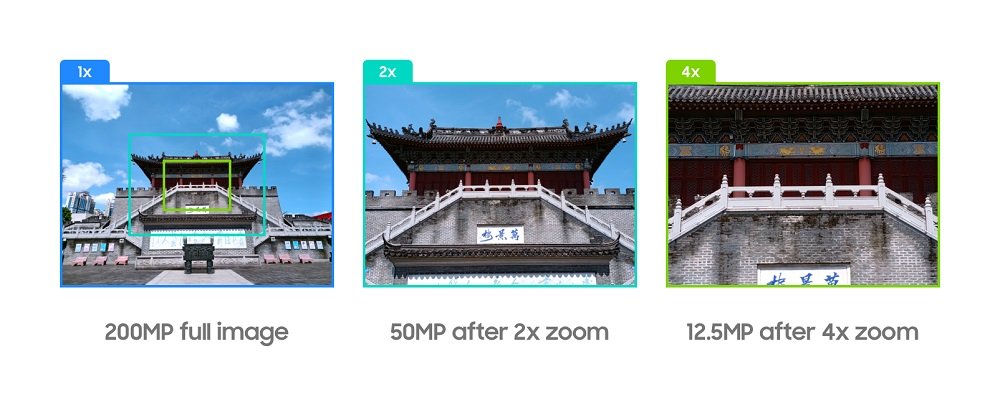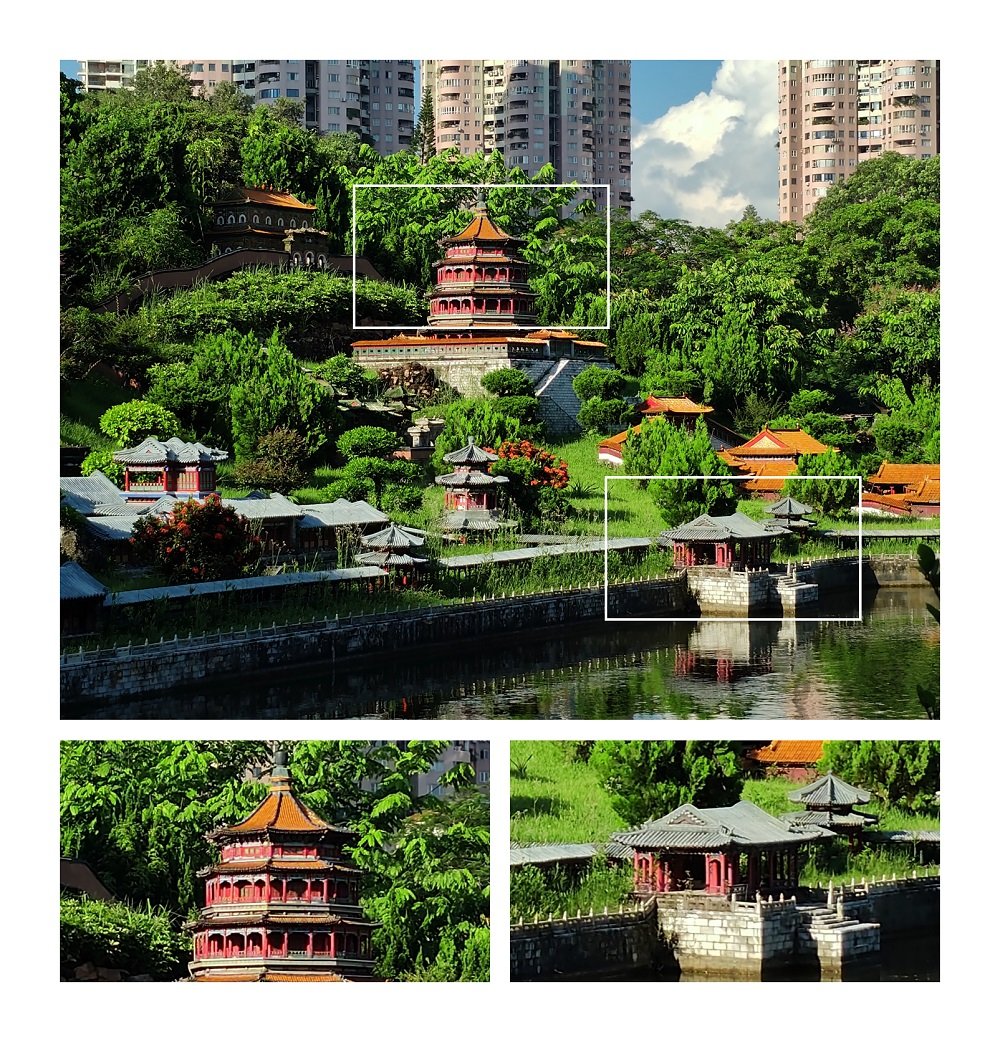ISOCELL’s ultra-high resolution 200MP sensors and remosaic technology are bridging the divide between wide and telephoto smartphone cameras
The camera is usually the main reference point for judging smartphones for two reasons: first, it is the feature most often used in everyday life, and second, assessing its performance is possible for even the untrained human eye. Smartphone cameras have improved rapidly over the last decade, but there are still obvious limitations due to the compact form factor. Each year, smartphone users expect their new devices to have better cameras in a thinner, lighter body. At the same time, more and more tech voices are commenting on the size of the camera bump and the overall thickness and weight of the device.
One of the leading solutions to this challenge is the telephoto camera, which has resulted in gradual improvements in telephoto sensor technology by the industry. With several major smartphone makers announcing the inclusion of enhanced telephoto cameras in their flagship devices, the telephoto camera is now being seen as the second main camera instead of just an extra or secondary camera. Looking to the future, the telephoto camera has emerged as a key factor driving the improvement of smartphone camera specifications.
Why Telephoto Cameras Are the Next Big Thing
Portrait photography is one of the areas in which telephoto-camera features truly shine. To shoot distant stills, many smartphone users use the high magnification mode on their telephoto camera. When it comes to portraits, however, they tend to take shots using wide mode. The issue is that the field of view distorts close objects, making it challenging to capture the subject accurately.

▲ (From left) Wide (1x) Camera, Telephoto (3x) Camera: Distortion comparison between wide and telephoto cameras
In the photo on the left above, the distortion of the subject has occurred due to taking a close-up shot with the main, wide camera, which has a focal length of 24mm and a field of view of about 84°. This distortion arises due to the wide camera’s short shooting distance for a close-up shot. Since the human face’s 3D shape is projected onto the 2D image sensor, the center of the face is extended compared to the face’s peripheral because of the relative distance from camera. This is called “extension distortion.” Shorter shooting distances increase the relative distance difference of facial 3D shapes, so the shorter the shooting distance, the greater the extension distortion. This explains why the wide camera is suitable for taking pictures of people against a landscape background (like at a tourist spot), but not for images in which people are the main subjects. On the other hand, a telephoto camera with a focal length of 85mm and a field of view of 29° is much less distorted at the most common magnification of 3-3.5x, making it more suitable for portrait photography.
Another reason telephoto cameras excel at portrait photography is the out-of-focus effect produced by the focal length. When all other variables are equal, the longer the focal length, the shallower the depth of field. In other words, the background around the subject will be blurred and out of focus, resulting in a photo that is more focused on the subject. So, while a wide camera is great for capturing both people and backgrounds in a tourist spot, a telephoto camera is much better for scenes that focus on the people themselves.
The Limitations of Telephoto Cameras Until Now
Currently, telephoto cameras are most often used in high-end smartphones. The optical format of image sensors for wide cameras in this segment ranges from 1/1.4″ to 1″, with image quality matching their size and features, such as high dynamic range (HDR) and high-speed shooting. In comparison, the optical format of telephoto image sensors is relatively small, ranging from 1/2.7″ to 1/2″ (besides a few exceptions). From a user perspective, such difference in specification means that telephoto cameras offer different image quality, color and HDR experiences than wide cameras. Telephoto cameras are often used for tracking subjects from a distance, such as in stadiums or concert halls, and users might find it difficult to capture photos and videos at the level of quality they want.
Comparison of Wide and Telephoto Sensors

- Both ISOCELL HP2 and ISOCELL HP3 are used in wide cameras.
- ISOCELL Product A and B are used in telephoto cameras.
Closing the gap between wide and telephoto cameras has become a key challenge for the smartphone industry, with the need for telephoto sensors to eventually reach the same level as wide sensors’ specifications and functions. Fortunately, as wide-angle sensor modules have become progressively larger and higher, the space for telephoto image sensor modules has grown correspondingly. Upgrading the size and capabilities of the telephoto image sensor not only allows users to maintain shooting scenarios close to those of wide sensors, but also has the added benefit of providing better out-focusing for portrait photography. This is because, for the same field of view, a larger image sensor will have a longer focal length, resulting in a shallower depth of field than a smaller telephoto sensor.
Ultra-High Resolution Sensors: Leading the ‘Second Main Camera’ Trend
ISOCELL’s ultra-high resolution image sensors are the appropriate solution for this trend of better telephoto cameras, allowing them to truly be seen as the second main camera. Unsurprisingly, the biggest strength of ultra-high resolution image sensors is their resolution, which has been proven by their successful implementation in various smartphones. They have also shown particular value in smartphones at a price point where adopting a separate telephoto camera is difficult or impossible. The images below show how a single 200MP sensor can fulfill both the telephoto and wide roles, with its 4x in-sensor zoom showing image quality comparable to that of a conventional telephoto sensor.

▲ Images captured by a 200MP image sensor with in-sensor zoom range of 1x to 4x

▲ Image quality comparison of conventional telephoto module and 200MP sensor with 4x in-sensor zoom
ISOCELL’s 200MP sensors offer 2x and 4x in-sensor zoom capability with no loss of resolution, thanks to the superior remosaic algorithm. The 4x zoom scene above shows image quality comparable to that of an optical 3x module, an outstanding achievement that makes separate optical zoom systems seem less necessary. The algorithm rearranges color pixels into an RGB Bayer pattern, so a 200MP sensor can maintain 12.5MP at 1x/2x/4x zoom with no loss of resolution. Since a smartphone’s main wide camera typically defaults to 12MP at 1x mode, this technology enables users to experience the same resolution at 2x/4x zoom.
In particular, the 200MP ISOCELL HP2 and ISOCELL HP3 improve zoomed shooting quality by applying a deep-learning-based remosaic algorithm that better enables the expression of scene-optimized details. Additionally, with flagship application processors (APs) like the Snapdragon® Mobile Platform, adopting internals that favor parallel computation, such as digital signal processors (DSPs) and graphics processing units (GPUs), has created synergy and significantly improved image quality.
Since these ultra-high resolution image sensors are inherently designed to be the main sensor, they feature advanced technologies to enhance image quality. The sensors make use of the Tetra²pixel function, which merges up to 16 neighboring pixels to enhance low-light image quality They also provide better performance for HDR and frames per second (FPS). Then there is the 1/1.3″ to 1/1.4″ large optical format, which can capture images with improved out-focus when compared to conventional telephoto sensors. Through these key advantages, 200MP ISOCELL image sensors are overcoming the barrier between wide and telephoto cameras, providing consistent image quality between main and sub cameras as well as innovative user experiences for flagship smartphone users.
For example, on a 3x telephoto module with a 200MP sensor, lossless zoom scenarios can be run from 3x to 6x to 12x. This impressive capability means that more diverse scenes can be captured without any loss of resolution. In everyday life, and especially at tourist spots, there are often moments when users not only want to capture the entire foreground but also zoom in on a specific area, such as the buildings in the image below. But having a subject that is farther away means that moving just a few steps results in an image that is very different from the one seen at the previous wide angle. In addition to the lack of zoom capabilities in existing smartphone cameras, the poor image quality of low resolution telephoto sensors is a major point of frustration when users get up close to their subjects. This is why ultra-high resolution image sensors in telephoto cameras are such an effective solution: users can capture more accurate, colorful memories of their environment, from the same place and at the angle of their choice.

▲ (From top) 12.5MP image captured by 200MP in-sensor zoom and some areas enlarged to show details
The ISOCELL Sensor Lineup Is Ready To Meet Market Needs
As the optical formats of wide cameras in premium smartphones increase in size, image sensors currently used in wide cameras (1/1.3″ to 1/1.4″) may also be incorporated into telephoto modules in the future. ISOCELL’s lineup of 200MP sensors, including the ISOCELL HP2 and ISOCELL HP3, are well-suited to that type of application. Both sensors were designed to meet the needs of premium wide sensors with regards to image quality, autofocus, HDR and FPS — and they are currently in production for use in several smartphone models. While they differ in some regards, both sensors have the same core feature: a 4×4 software deep-learning remosaic algorithm that enables 2x/4x lossless zoom and 4x on-chip crop zoom.
ISOCELL’s 200MP sensors have already demonstrated the value of ultra-high resolution by showcasing their impressive zoom capabilities in existing devices. As the competitive landscape of premium smartphones becomes increasingly focused on delivering a differentiated user experience — beyond hardware — ISOCELL’s ultra-high resolution sensors are set to prove their worth as a trendsetting solution enabling better zoom with epic details.
* All functionality, features, specifications and other product information provided in this document including, but not limited to, the benefits, components, performance, availability, and capabilities of the product are subject to change without notice or obligation.
* All images shown are provided for illustrative purposes only and may not be an exact representation of the product or images captured with the product. All images are digitally edited, modified, or enhanced.
This article was first published at Source link . You can check them out for other stuffs
